
The Zagros Mountains are a long mountain range in Iran, northern Iraq, and southeastern Turkey. This mountain range has a total length of 1,600 km (990 mi). The Zagros mountain range begins in northwestern Iran and roughly follows Iran's western border while covering much of southeastern Turkey and northeastern Iraq. From this border region, the range continues to the southeast under also the waters of the Persian Gulf. It spans the southern parts of the Armenian highland, the whole length of the western and southwestern Iranian plateau, ending at the Strait of Hormuz. The highest point is Mount Dena, at 4,409 metres (14,465 ft).

Tell Hassuna is a tell, or settlement mound, in the Nineveh Province (Iraq), about 35km south-west of Nineveh. It is the type site for the Hassuna culture.

Tell Leilan is an archaeological site situated near the Wadi Jarrah in the Khabur River basin in Al-Hasakah Governorate, northeastern Syria. The site has been occupied since the 5th millennium BC. During the late third millennium, the site was known as Shekhna. During that time it was under control of the Akkadian Empire and was used as an administrative center. Around 1800 BC, the site was renamed "Shubat-Enlil" by the king Shamshi-Adad I, and it became his residential capital. Shubat-Enlil was abandoned around 1700 BC.

Lullubi,Lulubi, more commonly known as Lullu, were a group of tribes during the 3rd millennium BC, from a region known as Lulubum, now the Sharazor plain of the Zagros Mountains of modern-day Sulaymaniyah Governorate, Iraq. Lullubi was neighbour and sometimes ally with the Simurrum kingdom. Frayne (1990) identified their city Lulubuna or Luluban with the region's modern town of Halabja.
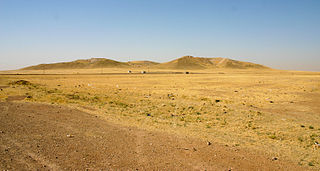
Tell Brak was an ancient city in Syria; its remains constitute a tell located in the Upper Khabur region, near the modern village of Tell Brak, 50 kilometers north-east of Al-Hasaka city, Al-Hasakah Governorate. The city's original name is unknown. During the second half of the third millennium BC, the city was known as Nagar and later on, Nawar.
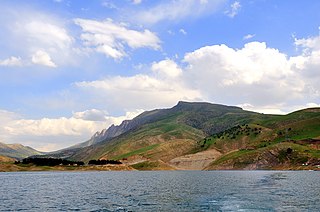
The Little Zab or Lower Zab is a river that originates in Iran and joins the Tigris just south of Al Zab in the Kurdistan region of Iraq. It is approximately 400 kilometres (250 mi) long and drains an area of about 22,000 square kilometres (8,500 sq mi). The river is fed by rainfall and snowmelt, resulting in a peak discharge in spring and low water in summer and early fall. Two dams have been built on the Little Zab, regulating the river flow, providing water for irrigation and generating hydroelectricity. The Zagros Mountains have been occupied since at least the Lower Palaeolithic, but the earliest archaeological site in the Little Zab basin, Barda Balka, dates to the Middle Palaeolithic. Human occupation of the Little Zab basin has been attested for every period since then.
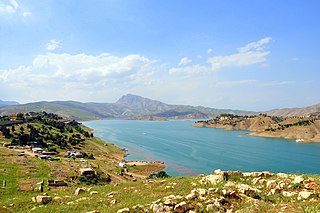
Lake Dukan is a lake in Kurdistan Region Iraq. It is located close to the city of Ranya, and is a reservoir on the Little Zab created by the construction of the Dukan Dam. The Dukan Dam was built between 1954 and 1959 as a multi-purpose dam to provide water storage, irrigation and hydroelectricity. Prior to the flooding of Lake Dukan, the area has been subjected to archaeological research to investigate as many archaeological sites as possible. An archaeological survey in the Ranya Plain documented some 40 archaeological sites with evidence for occupation ranging from the sixth millennium BCE up to the present. Five of these sites were then excavated: Tell Bazmusian, ed-Dem, Kamarian, Qarashina and Tell Shemshara. The excavations at Tell Bazmusian revealed a temple dating to the second millennium BCE. At Tell Shemshara, an early-sixth millennium BCE village was excavated, as well as an early-second millennium BCE palace with a small archive of clay tablets. The inhabitants of some 50 villages in the flooded area, around 1,000–1,200 families, were resettled to the west of the lake.

Carlsberg Foundation is a not-for-profit organization that was founded by J. C. Jacobsen in 1876, by allocating some of his shares in the Carlsberg Brewery to fund and operate the Carlsberg Laboratory and the Museum of National History at Frederiksborg Palace. The foundation has since expanded to fund scientific research, and via the Tuborg Foundation to fund social works. As of 2011 it owned 30.3% of the shares in Carlsberg Group and controlled 74.2% of the voting power.

The Samarra culture is a Late Neolithic archaeological culture of northern Mesopotamia, roughly dated to between 5500 and 4800 BCE. It partially overlaps with Hassuna and early Ubaid. Samarran material culture was first recognized during excavations by German Archaeologist Ernst Herzfeld at the site of Samarra. Other sites where Samarran material has been found include Tell Shemshara, Tell es-Sawwan, and Yarim Tepe.
Tell al-Rimah is a tell, or archaeological settlement mound, in Nineveh Province (Iraq) roughly 80 kilometres (50 mi) west of Mosul and ancient Nineveh in the Sinjar region. It lies 15 kilometers south of the site of Tal Afar. Its ancient name may have been either Karana or Qattara, though the later name is now less favored.
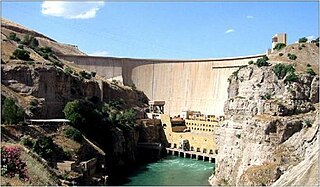
The Dukan Dam is a multi-purpose concrete arch dam in As Sulaymaniyah Governorate, Kurdistan Region of Iraq. It impounds the Little Zab, thereby creating Lake Dukan. The Dukan Dam was built between 1954 and 1959 whereas its power station became fully operational in 1979. The dam is 360 metres (1,180 ft) long and 116.5 metres (382 ft) high and its hydroelectric power station has a maximum capacity of 400 MW.
Tell es-Sawwan is an important Samarran period archaeological site in Saladin Province, Iraq. It is located 110 kilometres (68 mi) north of Baghdad, and south of Samarra. It lies on a 12 meter high cliff overlooking the Tigris River.

Tell Bazmusian is an archaeological site on the right bank of the Little Zab in the Ranya Plain. The site was excavated between 1956 and 1958 by Iraqi archaeologists as part of a salvage operation to document cultural remains that would be flooded by Lake Dukan, the reservoir created by the Dukan Dam which was being built at that time. Apart from Tell Bazmusian, four other sites were excavated during this operation: ed-Dem, Kamarian, Qarashina and Tell Shemshara. Bazmusian is a tell, or settlement mound, with a circumference of 1,500 metres (4,900 ft) and a height of 23 metres (75 ft). Together with Tell Shemshara, it is one of the largest archaeological sites in the Ranya Plain. When the excavations started, the southeast flank of the mound was occupied by a village that was only established at the beginning of the 20th century. The site is now submerged under Lake Dukan.

The National Museum of Denmark (Nationalmuseet) in Copenhagen is Denmark's largest museum of cultural history, comprising the histories of Danish and foreign cultures, alike. The museum's main building is located a short distance from Strøget at the center of Copenhagen. It contains exhibits from around the world, from Greenland to South America. Additionally, the museum sponsors SILA - The Greenland Research Center at the National Museum of Denmark to further archaeological and anthropological research in Greenland.
The Turukkaeans were a Bronze and Iron Age people of Mesopotamia and the Zagros Mountains, in South West Asia. Their endonym has sometimes been reconstructed as Tukri.

Simurrum was an important city state of the Mesopotamian area from around 2000 BCE to 1500 BCE, during the period of the Akkadian Empire down to Ur III. The Simurrum Kingdom disappears from records after the Old Babylonian period. It is thought that in Old Babylonian times its name was Zabban, a notable cult center of Adad. It was neighbor and sometimes ally with the Lullubi kingdom.

Bestansur is a Neolithic tell, or archaeological settlement mound, located in Sulaimaniyah province, Kurdistan Regional Government, Iraq in the western Zagros foothills. The site is located on the edge of the Shahrizor Plain, 30 km to the south-east of Sulaimaniyah. It is on the UNESCO World Heritage Tentative List.
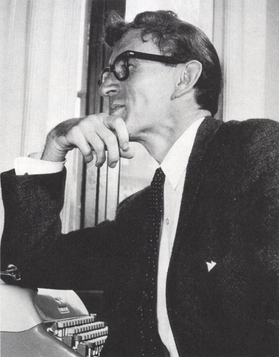
Jørgen Læssøe was a Danish Assyriologist and professor at the University of Copenhagen. He directed the Danish excavations at Tell Shemshara, uncovering an Old Assyrian palace complex and a substantial cache of cuneiform texts known as the Shemshara Archives, which became his main object of study. He also worked on inscriptions from Max Mallowan's excavations at Nimrud, served as the field director of the Scandinavian Joint Expedition to Sudanese Nubia, and published a number of popular history books on Assyriology in Danish, including his magnum opus, The People of Ancient Assyria (1963).

Tell Kunara is an ancient Near East archaeological site about 5 kilometres (3.1 mi) southwest of Sulaymaniyah in the Kurdistan region of Iraq. It lies on the Tanjaro River. The site was occupied from the Chalcolithic period to the early second millennium BC.
Kurd Qaburstan, is an ancient Near East archaeological site in the Erbil Governorate, in the Kurdistan Region of Iraq, 22 kilometers southwest of Erbil. It is considered one of the most important archaeological sites in the area. It lies halfway between the Upper and Lower Zab rivers. The modern village of Yedi Kizlar covers to southeastern part of the lower town. The site dates back to the late 3rd millennium BC but was primarily occupied during the first half of the 2nd millennium, in the Old Babylonian and Mitanni periods. It has been suggested as the site of the ancient city of Qabra. Nearby promising excavations are at Tell Baqrta and Qasr Shemamok (Kilizi).















